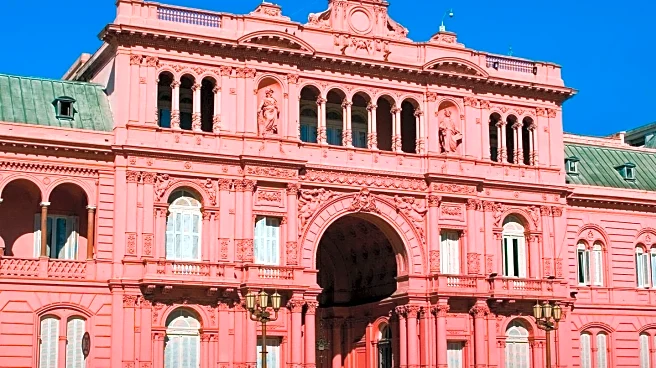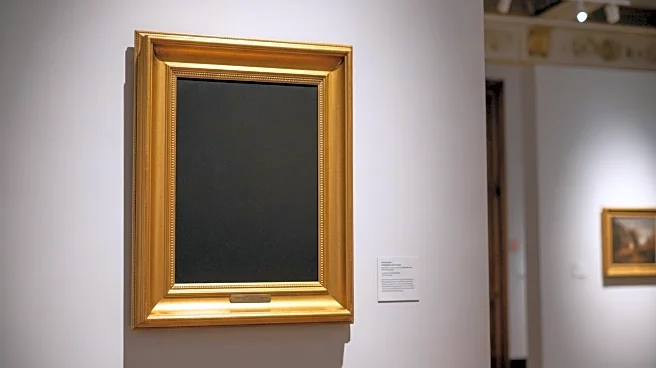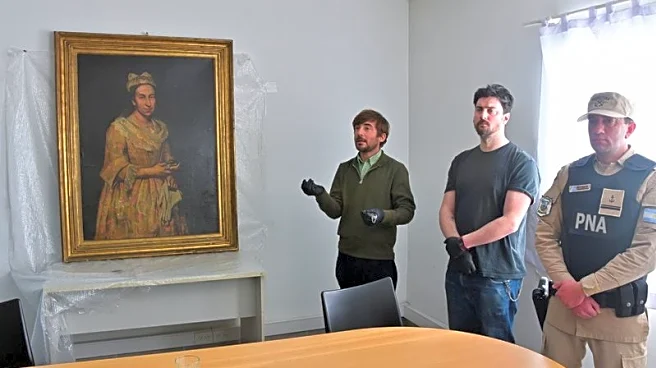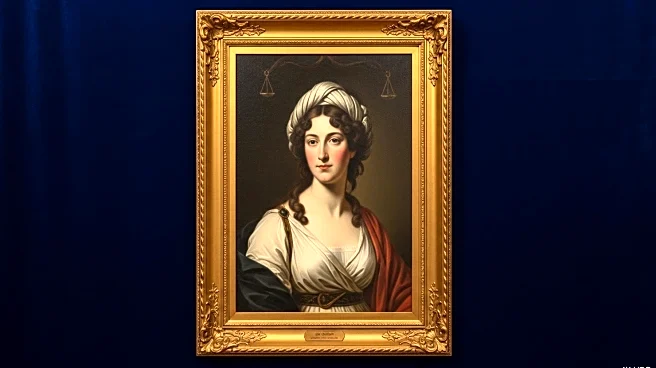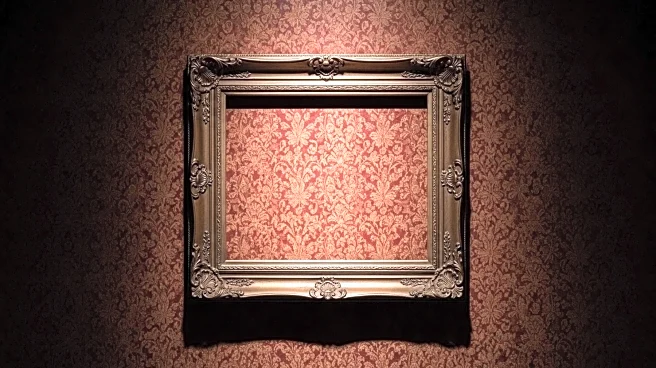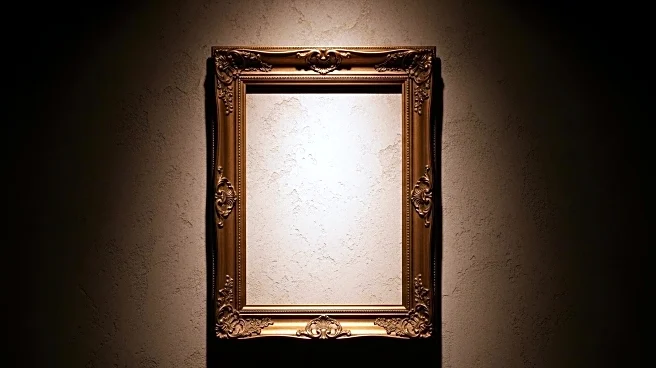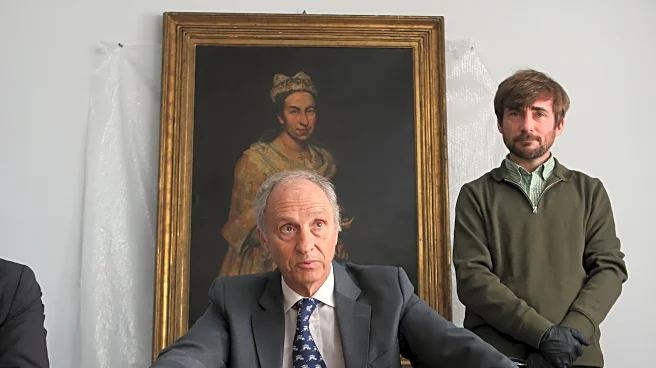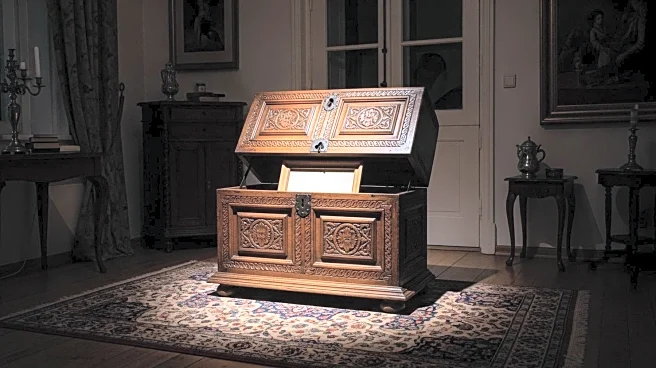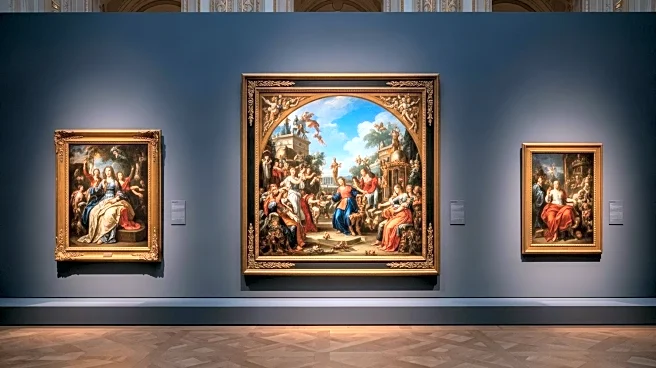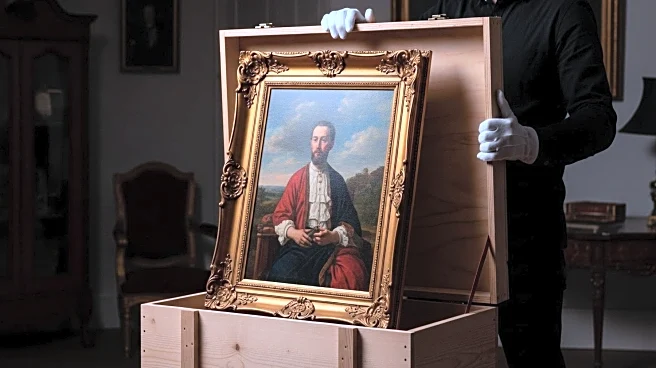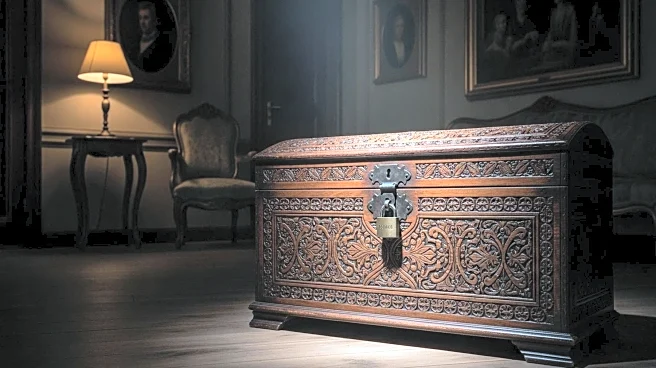What's Happening?
Argentine authorities have reportedly recovered a painting believed to be looted by Nazis, which surfaced in a real estate listing in Mar del Plata. The painting, attributed to Giuseppe Ghislandi, was part of the collection of Jewish dealer Jacques Goudstikker, who fled Amsterdam during the Nazi rise. The painting was found in the home of Patricia Kadgien, daughter of a Nazi official, who has been placed under house arrest. Kadgien claims ownership of the painting, asserting it was inherited. The artwork is listed as missing in a registry of lost art, and its recovery is part of ongoing efforts to return looted art to rightful owners.
Why It's Important?
The recovery of Nazi-looted art is a significant step in addressing historical injustices and restoring cultural heritage to rightful owners. Artworks looted during World War II represent a dark chapter in history, and their return is crucial for reconciliation and justice. This case highlights the complexities involved in art restitution, including legal disputes over ownership and the challenges of tracing provenance. The recovery also underscores the importance of international cooperation in identifying and returning stolen cultural assets, contributing to broader efforts to preserve historical memory and promote ethical practices in the art world.
What's Next?
The painting's recovery may lead to legal proceedings to determine its rightful ownership, involving Kadgien's claims and the interests of Goudstikker's heirs. Argentine authorities and international organizations may continue investigations to uncover more looted artworks and facilitate their return. This case could prompt further scrutiny of art collections with questionable provenance, encouraging museums and private collectors to review their holdings. The ongoing dialogue around art restitution may influence policies and practices in the art market, promoting transparency and accountability.
